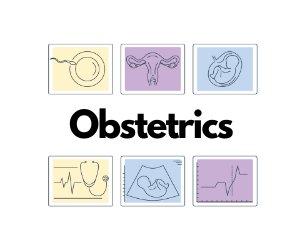So you’ve done the test and you’re pregnant, congratulations!
What now. A whole heap of decisions need to be made including what type of care for you and your baby do you want and will you go to the local public hospital or a private one.
In Australia, we are lucky to have options, both with their own advantages and disadvantages.
What’s the difference?
The public system is run by government as a public service, funded by the taxation system whereas the private system is run by private providers where the user pays. Private health insurance policies can be purchased to help meet some of the costs in the private sector and for most people, not having private health insurance means that the cost would be prohibitive if they were paying the total amount out of their own pockets and so the decision may be made for them.
On the surface, it may seem pretty hard to go past the Australian public health system which is the envy of the rest of the world. Healthcare for Australian citizens is “free” in the public hospital system which is funded by government. This service is available to everyone who is a citizen of the country and is not means tested, meaning that it is available to everyone, from multimillionaires to those with very limited means.
Public hospitals are run by the various state governments and by and large, you are required to attend the nearest public hospital offering the services you need. This is the first time that you start to hear about choice and choice is probably the one thing most women notice as being significantly different in the public health experience when compared with the private one.
In the public system, you can’t pick the facility, nor can you pick the treating doctor and waiting times for elective procedures can be quite prolonged. Traditionally, hotel services like food menus, entertainment and accommodation are more basic in public hospitals although most maternity units today are moving away from large shared wards and women are less likely to have to share a room during their hospital admission. The maternity unit is usually one of the first to be renovated in a hospital.
Once inside the public system, all scans, tests and visits by which ever specialist you may need should be completely covered and public patients should not be required to pay any additional fees.
Public hospitals run largely by following protocols for routine maternity patients with more individualised care saved for higher risk women. You may have to pay out of pocket costs for tests that you want if they are not part of the routine protocols, like NIPT tests or gene studies for women deemed to be at low risk. As demand for free public hospital services increase, the timing of the first visit and many public hospitals has been pushed along until the mid-trimester meaning that a lot of the blood tests and scans done in the early part of pregnancy may need to be done at your local general practitioner which may generate out-of-pocket costs.
The other major difference in the public sector is who actually performs the visits and is present for the delivery of your baby. Antenatal care in public hospitals is usually delivered in clinics by midwives and registrars- junior doctors who are studying to become obstetric specialists. It is not uncommon for all your care to be given by a midwife and not be seen by a doctor during your pregnancy if no problems are detected. Most public hospitals are teaching hospitals which means that midwifery, medical, nursing, physiotherapy and perhaps other students will be around and may play a role in your care. You do have the right to ask not to be seen by a student during your time in the hospital but remember they are performing a vital function in helping to clear workloads and also receiving education which will make them the caregivers of tomorrow.
In the private sector, all your visits are with your chosen specialist obstetrician or midwife who will generate a fee for every consultation. A part of this fee attracts a Medicare rebate and the difference between the nonindexed Medicare rebates and whatever fee your caregiver charges is the out-of-pocket fee per visit. The obstetrician you see at your antenatal visits is usually the person present for your delivery in traditional private obstetric models although some private doctors use team models closer aligned to the public mode, where a different person covers labour Ward and delivery each day rather than your known doctor. A private midwife will provide care during the labour and deliver the baby. You make appointments at a time that is convenient to you in the private sector and a private midwife or obstetrician will normally start to see you shortly after a positive pregnancy test has been confirmed. They will arrange the usual early pregnancy tests and scans and explain the findings to you.
In the public sector, there is no guarantee will be seen by the same person at each visit and for some people this is a major consideration when choosing a private model of care. Studies from around the world all report that pregnant women gain a great deal of comfort and benefit from seeing the same person during their antenatal care and gain great support from having a known person be present in the delivery. In view of this, larger public hospitals are trying to implement continuity of carer models where the same, or one of a small team of professionals, sees the patient during antenatal course and if rosters permit, during the delivery.
Increasing demand on public health care means that pressure for capacity has also increased. Whereas 20 years ago you would have started going to your local hospital antenatal clinic from the time your pregnancy was diagnosed, nowadays it is uncommon to get an appointment at a public clinic for an uncomplicated woman until around 18- 20 weeks. This means that all the blood tests and early scans will have been done by your general practitioner in the community and this sometimes brings with it an out-of-pocket expense if access to a bulk billing pathology or radiology practice is limited.
Care during labour in both public and private sectors should involve one-on-one midwifery presence so a labouring woman is never left unattended. In the private sector, most of the internal examinations are done by your obstetrician or private midwife and they will discuss any treatment that may needed if things aren’t progressing normally. Publicly, the hospital midwife will report any concerns to the on- duty obstetric registrars and if need be, the registrar can further discuss a woman’s care with a specialist obstetrician.
Many capital city maternity hospitals have public and private facilities colocated with public and private ladies in the same labour ward but separate post birth accommodation, while some purely private hospitals only cater to the private sector.
If your care is being undertaken by a private midwife and you need a specialist obstetrician to deliver the baby, they will have a pre-existing arrangement with a private obstetrician for this and call them in. This will generate a further fee.
Publicly, most normal deliveries are conducted by the hospital midwife and privately, the chosen obstetrician or midwife is usually the one delivering the baby. Should an operative vaginal delivery like forceps or vacuum or a cesarean section be required, this will be done by the woman’s private obstetrician in the private sector, or the public hospital’s on call obstetrician.
Should the baby require specialised neonatal intensive care after the delivery, this is usually in the larger public tertiary hospitals and if a baby is delivered in a private hospital without this facility, mother and baby will need to be transferred to a place where this care can be given. Private hospitals without a neonatal intensive care unit will usually have specified limits for example when preterm babies can be delivered at the hospital and transfer arrangements made to a larger public hospital if need be.
The baby is checked soon after delivery and daily while in hospital to make sure they are doing well. In the public sector, these visits may be undertaken by the midwife if all is well, or a paediatric registrar, while privately, a consultant paediatrician will see every baby.
The length of stay in hospital after the baby is born, is generally a little longer in the private sector where the pressure of beds is less. Your private obstetrician and paediatrician will visit you and your baby every day until they decide you are ready for discharge. This varies, but an average rule of thumb is 3-4 days for a vaginal delivery and 4-5 days for a cesarean section. A postnatal visit is usually arranged with a private obstetrician or midwife around six weeks unless any issues arise needing review earlier. At this visit, general checks are made as well as screening for postnatal depression and making sure contraception and Pap smears et cetera are up-to-date.
In the public sector, most postnatal care for mother and baby is undertaken at the general practitioner and discharge is usually at one day after delivery for a vaginal birth and two days for cesarean section. In both sectors, an increasing number of women are being encouraged to leave the hospital if all is well a few hours after delivery. A hospital postnatal visit is not normally undertaken unless there are significant concerns or complications that arose and postnatal depression screening as well as contraception and other issues are handled by the woman’s general practitioner.
The differences between the public and private sector are mostly related to the choices a woman has. Be this which hospital to deliver at or which caregiver to look after her during the pregnancy and delivery. The physical surroundings in private hospitals may be nicer and the amount of time she stays in longer and these are some of the reasons for increased costs in this sector.
Whichever model of care you choose, be reassured that Australia has an enviable reputation around the world when it comes to safety for both mothers and babies. The experience a woman has having a baby, is very important and having the choice to pick what care you receive helps make having a baby and enjoyable and memorable time in any family’s life.









